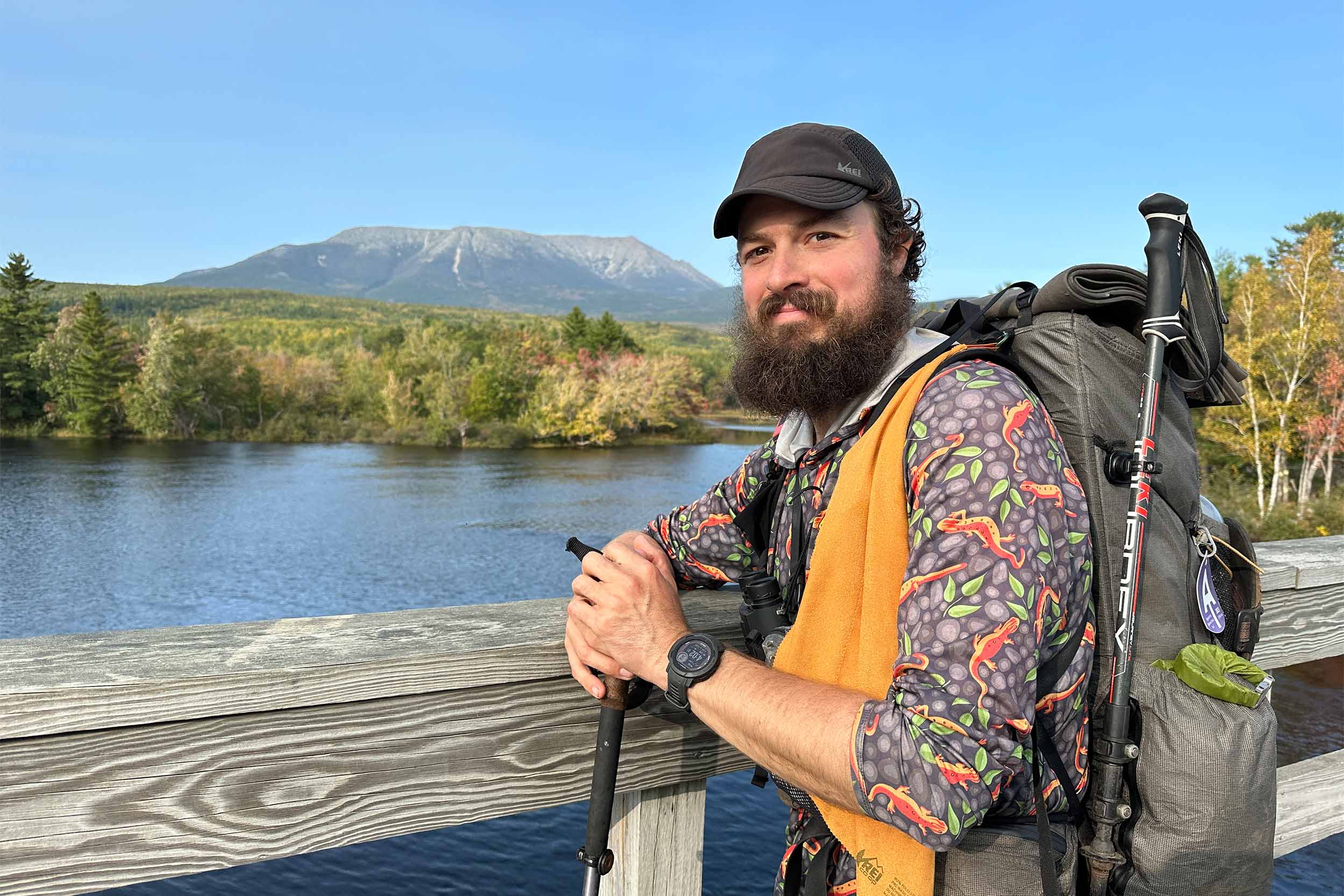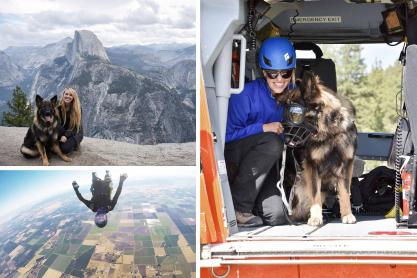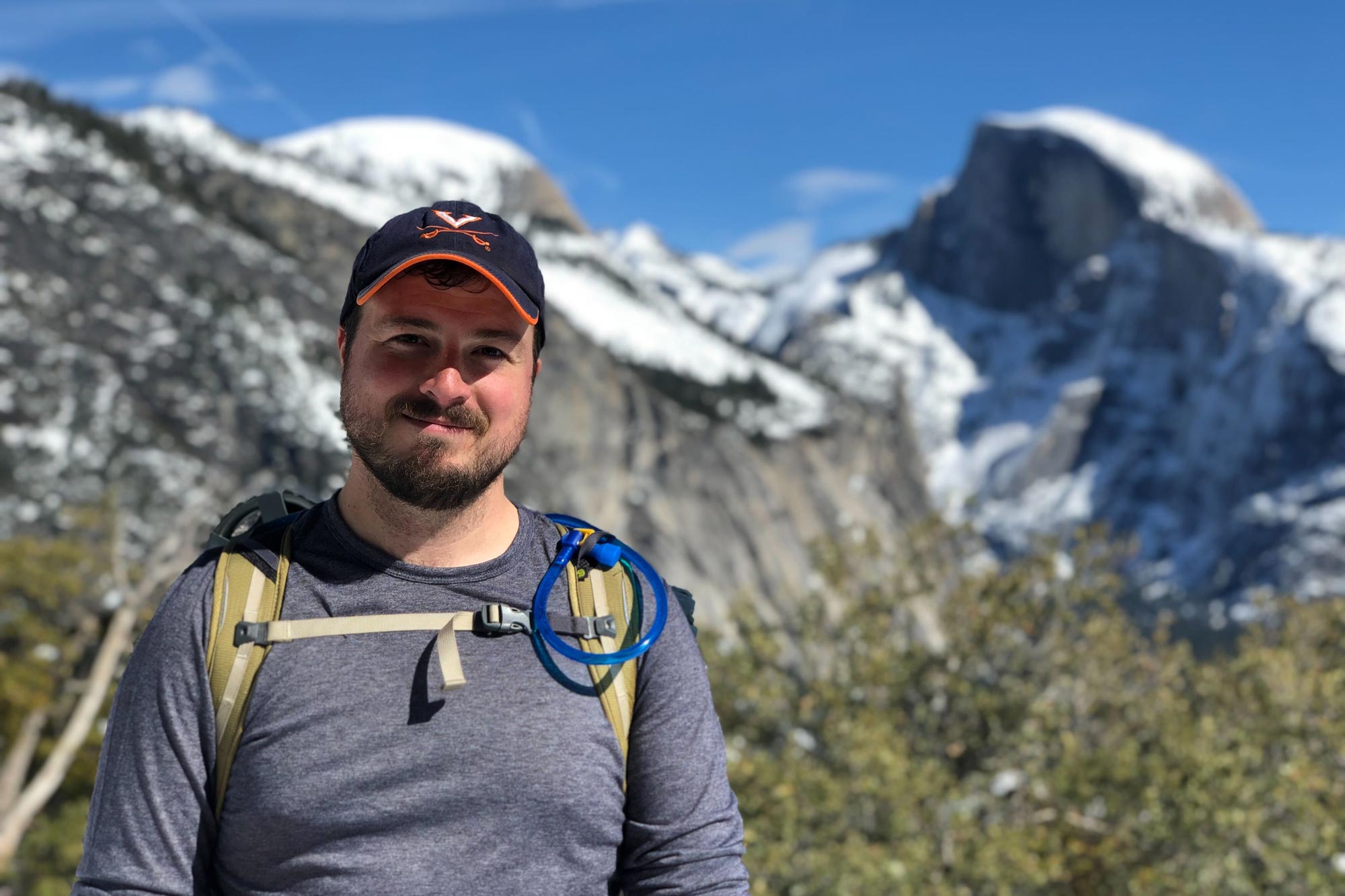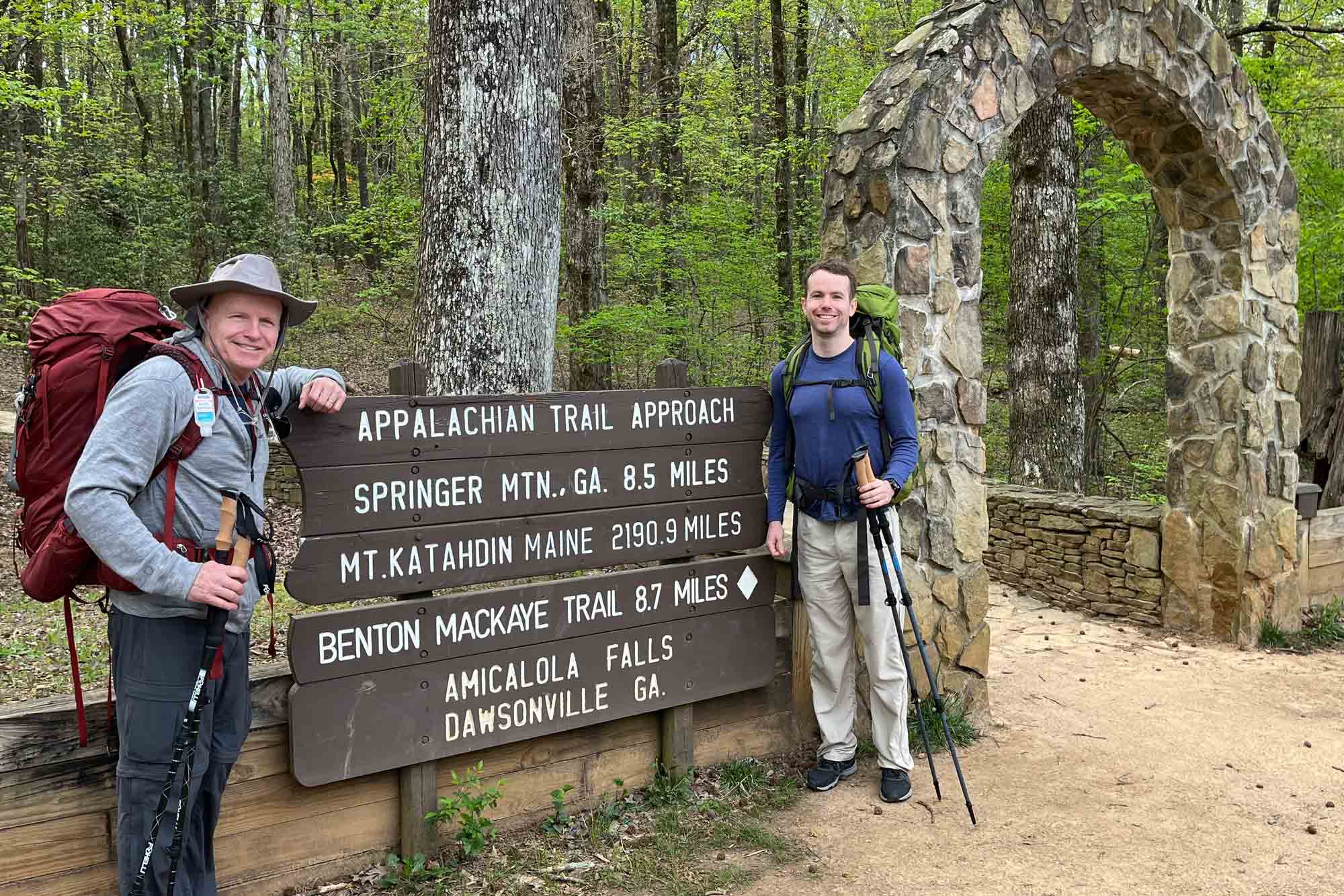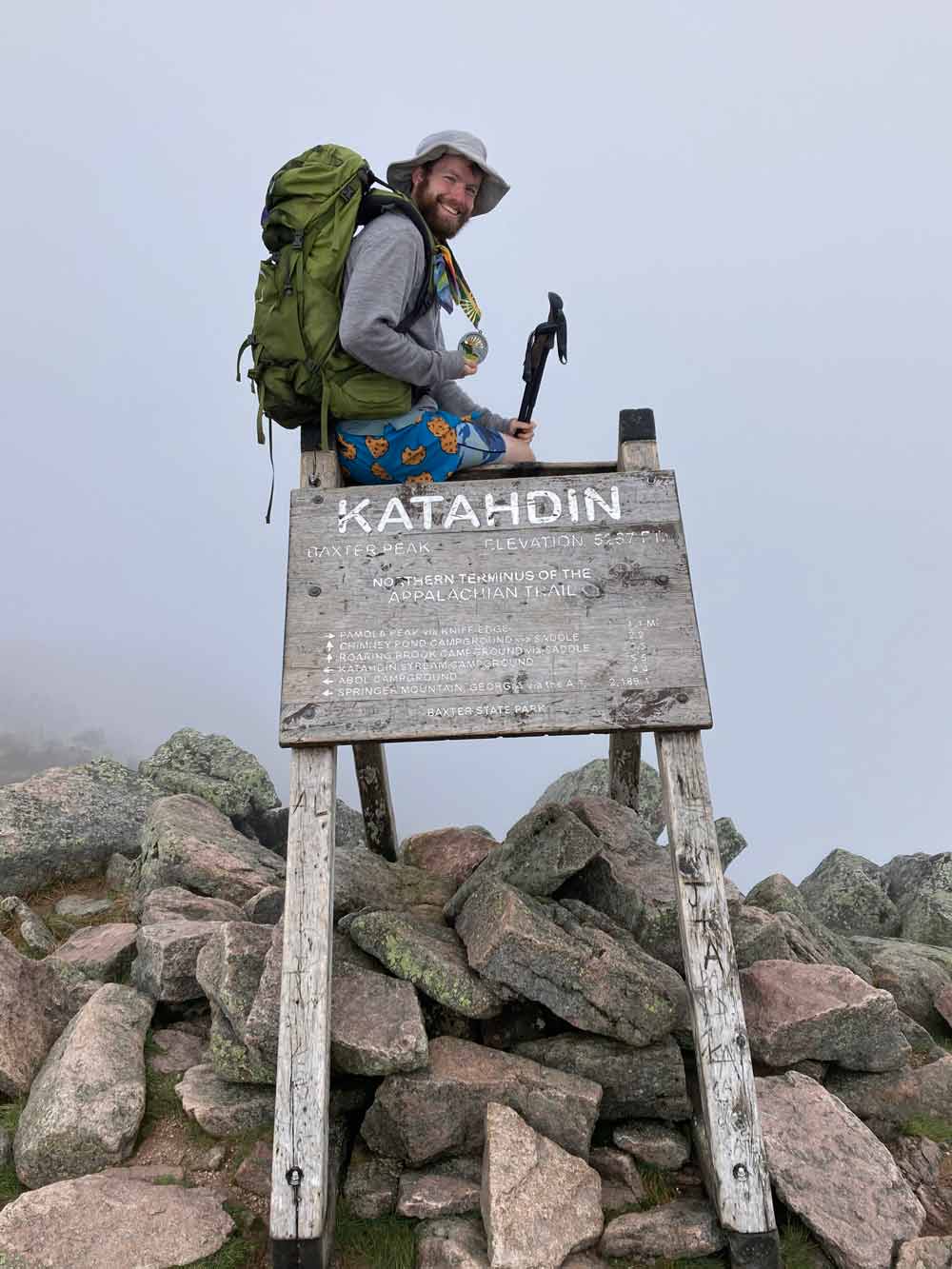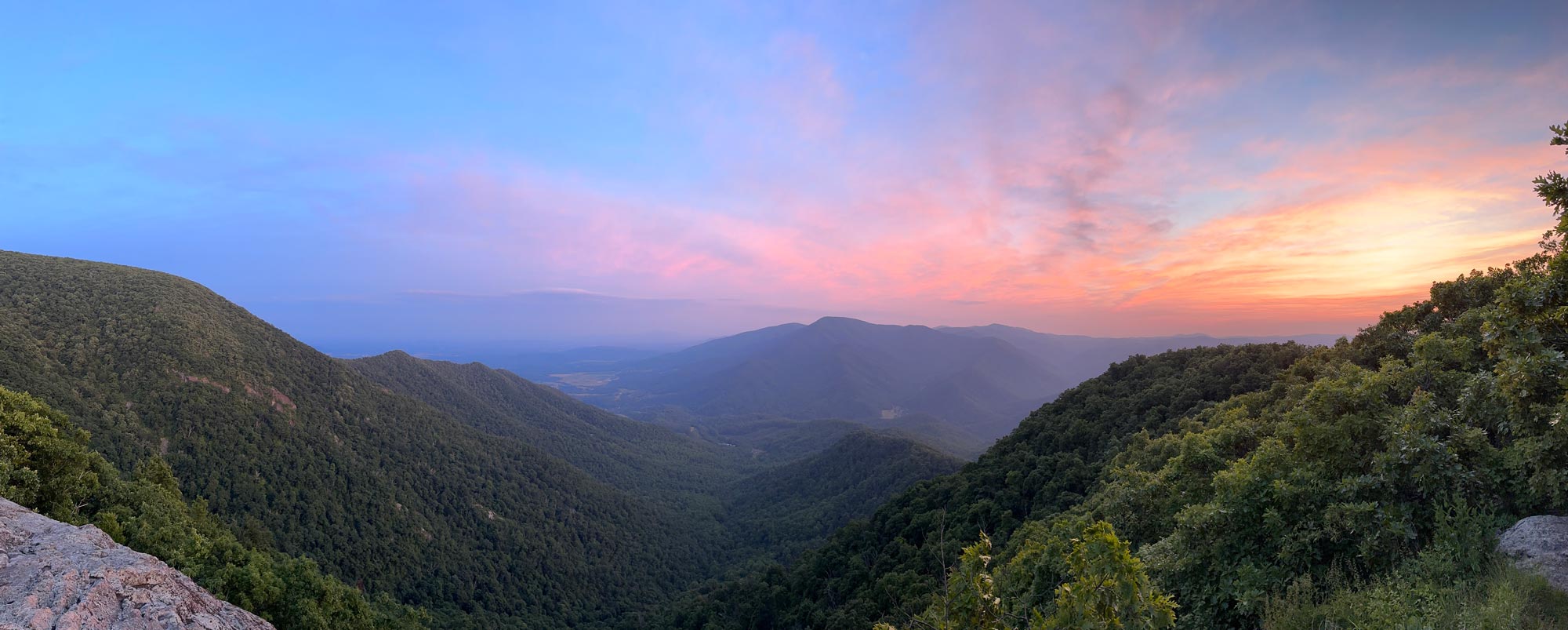Gaining a trail name is customary for long-distance hikers, especially along the Appalachian Trail. A 2009 graduate, Masters was one of at least two Wahoos to complete the Trail this fall, joining 2014 graduate David “Cambio” Van Petten.
“There’s a card game named Cambio,” Van Petten said. “And I was teaching folks that game on the second night on trail. And then we ran into them a few days later, and apparently, they had played the crap out of it. So, they were all calling me ‘Cambio.’”
Friday is recognized as National Hiking Day in the United States, and UVA Today caught up with the accomplished “Cambio” and “Masters” for advice on the best ways to enjoy the popular activity.
Who knows? Perhaps there’s even a trail name in your future.
Q. What are the best benefits to hiking?
Burney: If you’re hiking along the [Appalachian Trail], it is a workout. You don’t do much of an upper-body workout, but everyone who hiked that Trail can tell you it’s a good lower-body workout. If you use poles, too, you do get a little bit of a full-body workout.
But more so than that, I think it is really good for mental health and spiritual health. There are some books that I’ve read – like “The Nature Fix” – that show there’s proven health benefits to getting time outside in green areas at least once a week.
Van Petten: I feel like the people who get the biggest benefits from hiking are those who need a change. And by that, I mean people who need to get away from their everyday life and kind of just disconnect. “I’m away from society and now I’m in the woods.”
Of course, I’m saying this in the context of Appalachian Trail hikers, the folks who I met. But they were definitely the ones who were the most passionate and enthusiastic about being out there. A lot of people really think that hiking changes them and brings them back down to earth, lets them get away from their problems in some way.
There’s some sort of instinctual pull to being in such a setting as opposed to being in what we have created for ourselves artificially every single day.
Q. What would you consider essentials to bring with you while on a hike?
Burney: The essentials on any hike are food and water. Those are the main two things.
And this is something I never really carried before doing the [Appalachian] Trail, but I think I always will now: Some sort of small first-aid kit. Because even on a 3-mile hike, when you’re climbing rocks and stuff, you could easily skin your knee and having some ointment or something to put on it before getting down [the mountain] is really helpful.
One thing I will probably start carrying on even small hikes now is a water filter. You can carry water, but even on a short hike, something can happen where if you get off-trail or go in some weird way, break your leg or something, and you’re out there alone and you’re stuck out there overnight, having a water filter is key.
They make specific hiking or backpacking water filters. It comes with hollow tubes, so basically you can just go to a pond or stream and get water and drink it without fear of it making you sick.
Van Petten: A big one for me is tape. Even for a day hike, anything can start rubbing in a weird way. You’ll chafe in ways that you didn’t think was possible, even if you’ve worn these clothes before, you’ve worn these shoes before. If the weather is different in a certain way, if there’s some sort of condition that makes it different than normal, you’re going to be chafing so badly and moving is going to be tough.
So tape has always been a big winner for me, taping over the hotspots before they become a big problem. KT Tape in particular.
Q. What should you wear on a hike?
Van Petten: This is definitely per person. When it came to my dad and I, we were always wearing light clothes [on the Appalachian Trail]. At the beginning we did wear pants and long sleeves, and we shouldn’t have when it came to comfort.
Obviously, it was great to keep the ticks away. But the second half [of the Trail], I was always wearing shorts and a T-shirt even when it was like in the 40s and we were moving.
It depends on the kind of hike you’re doing, right? Obviously, we were trying to get distance, we were trying to keep moving fast. If you’re trying to go slow and enjoy your hike and take in the views and take many breaks, then of course, a fleece jacket and some sort of Merino wool bottoms would be really nice. But if you’re trying to hike and get up and down, you don’t need to wear too many clothes.
Burney: Yeah, I think the real important thing is layers. Wear super lightweight base layers. But if you're going to be climbing mountains where weather can change, then take a fleece.
Q. Do you prefer to hike alone or in a group?
Burney: Groups are definitely the recommendation – go in hiking groups, hike with a buddy. But I think there’s a lot to be said about hiking alone, to being out alone in the woods. If you’re gonna hike alone, make sure someone knows where you are, what trail you’re doing, where you’re going.
I really enjoyed solo hiking. I probably did 90% of the Trail on my own. If you’re doing a lot of solo day hikes, that’s just the important thing – make sure that someone knows what trail you’re going to and where you’re going.
Q. What are some of the best trails to hike in Central Virginia?
Burney: The spot where I did a lot of my training for the AT was Three Ridges Wilderness, which is an hour from Charlottesville and part of the AT. They aren’t long trails, but you can easily do overnight backpacking. They are some of the more challenging trails in the area. Most anyone who’s hiked the AT, Three Ridges was probably one of their most memorable or worst climbs of the trail.
I also like the White Oak Canyon Trail. It’s a nice day hike with two or three waterfalls on it.
Everyone would say Old Rag. Surprisingly I’ve never done Old Rag, but that’s a great one.
Q. If people are considering hiking the Appalachian Trail, what should they know?
Van Petten: One big thing is the amount of food. When you look up how many calories a day a through-hiker needs, you’ll get answers like 5,000 or 5,500 calories a day to maintain weight.
I saw that and I was like, ‘OK, I’m really smart. I’m going to make sure we eat 5,000 calories a day.’ You ever carry that much food? That’s a lot of weight. Also, you’re not even capable of eating all that food, especially at the beginning of the trail.
So my big piece of advice for someone prepping is to pack light with the food. Obviously pack a lot of food, but don’t pack as much as you think you’re going to need because you’re not going to be able to eat at all. And you’re gonna end up with too heavy of a pack.
Burney: One thing for me is not stressing too much over it. There are so many people that did tons of research, tons of practice, invested all this money in gear and then they went out there and within the first week they’re like, ‘Oh, this is not for me,’ and they’re done.
The other thing is you’re out there for six months. Everything you think you know is going to change by the time you finish. So, you may come out with a very specific plan, but that plan doesn’t last two, three days.
I kind of took things as they came and it made it so I could be more flexible. It made the AT more enjoyable.
